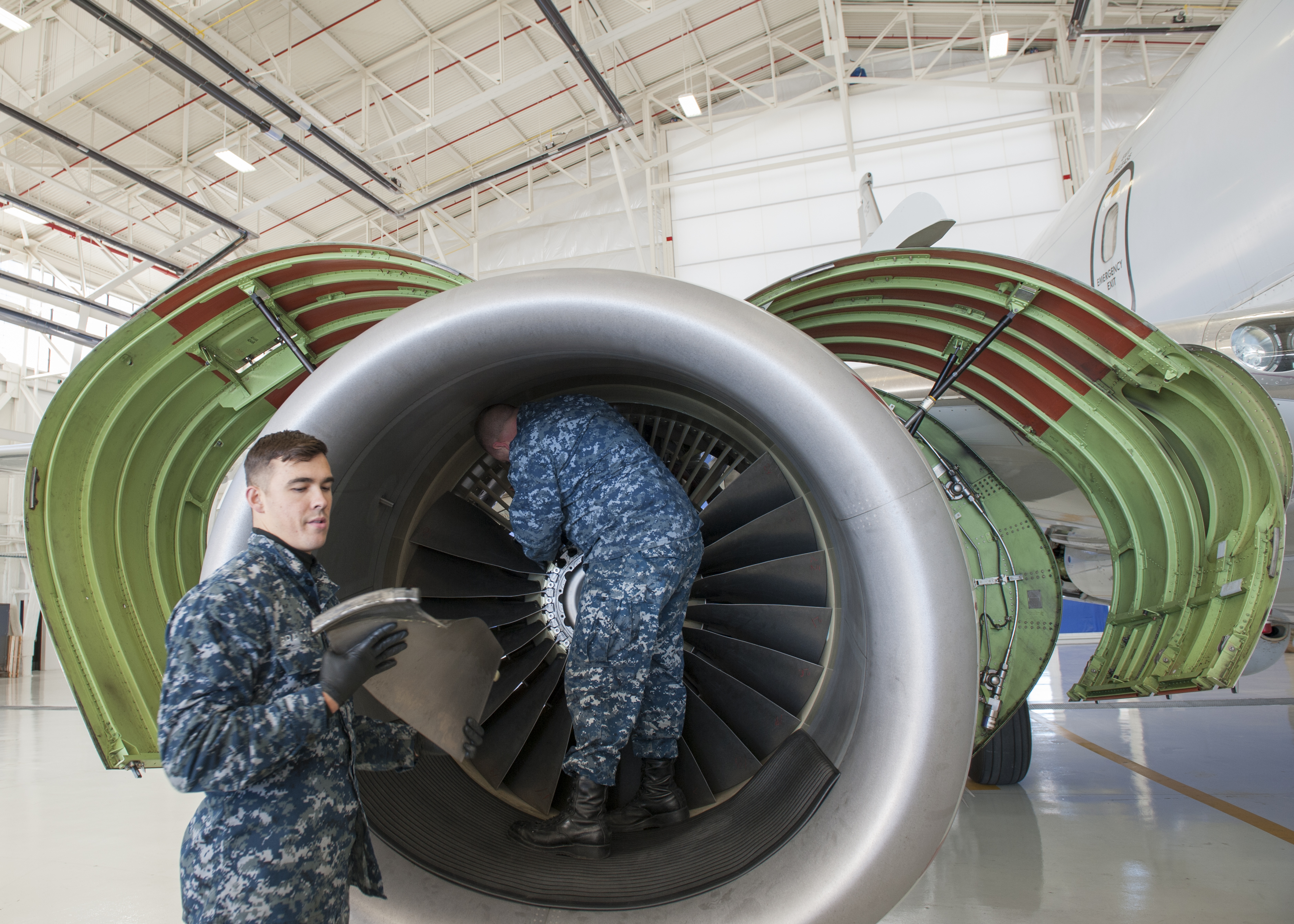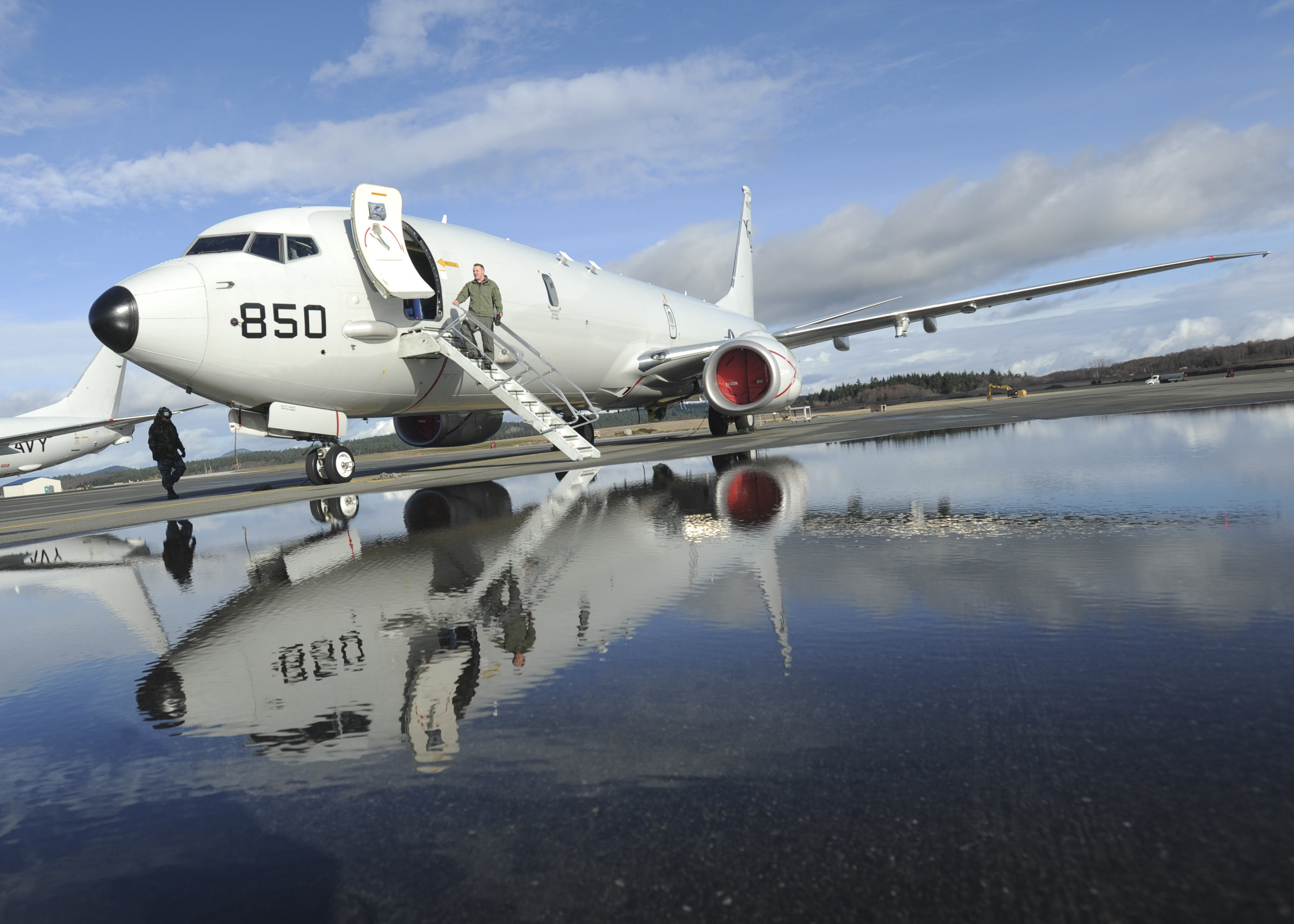
The Navy’s fleet of P-8A Poseidon aircraft are not in any immediate risk of facing the same engine failure that caused the April 17 emergency landing of a Boeing 737 – which the P-8 design is derived from – a Navy spokeswoman told USNI News.
The Federal Aviation Administration on Friday issued an emergency airworthiness directive mandating that any plane whose CFM56-7B engine had conducted more than 30,000 takeoff-and-landing cycles must be inspected within 20 days. This would affect 352 engines in the U.S. and 681 engines worldwide, according to the FAA statement.
However, the Navy’s P-8s are not among them. Though the P-8 – which is built on the same 737 production line as the commercial planes but then pulled aside for the addition of military-specific gear – uses the same CFM56-7B engine, “there is no immediate risk to or action to be taken by the P-8A community. The Navy’s P-8A engines remain well below the cycle limit for required inspections of fan blades,” P-8 program office spokeswoman Denver Beaulieu-Hains told USNI News today.
“The FAA mandates inspection [for commercial aircraft] to start at 20,000 cycles, while the current high-time P-8A has accrued 5,175 cycles (as of 13 Apr 18) since it entered service in 2012. At the current cycle rate, the first engine in the P-8A fleet will hit the 20,000 cycle point in about 10 to 15 years.”

Beaulieu-Hains said that Naval Air Systems Command had previously determined that the P-8 engines’ fan blades – the component that failed in the Southwest Airlines Flight 1380 incident at more than 30,000 feet altitude that killed one passenger and forced an emergency landing – would be inspected when the planes are brought in for their first scheduled depot maintenance visit, which would occur “no later than the 6,000-cycle threshold, with a recurring 6,000-cycle inspection interval through 20,000 cycles. After 20,000 cycles have accumulated, the engine will be inspected at a 3,000-cycle interval,” she said.
Boeing has sold its P-8A to the U.S. Navy, the Royal Australian Air Force and the United Kingdom Royal Air Force, and its P-8I variant to the Indian Navy. The Navy has 64 planes in its inventory as of January and is slated to buy 111 total, according to NAVAIR.





